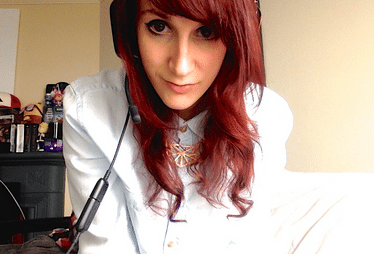Crowdfunding may be a great idea to gain support and funding for your project, however, creating a respected and successful crowdfunding project isn’t an easy task. As discussed in crowdfunding: part one, many hours of work go into not only planning out every piece of your crowdfunding page but also keeping up with marketing it as much as possible.
Throughout the seemingly simple process of crowdfunding, there are some underlying struggles and controversies. Before launching your own project, it’s important to be aware of some of the caveats and stories of crowdfunding campaigns gone awry.
The Good
In a perfect situation, your project will reach (possibly even exceed) its funding goal. From there, your idea can be brought to life, and the success story of your campaign will live on for years to come. Though it seems like a longshot, having a successful campaign is possible, especially when it is planned and marketed properly. If you stay multiple steps ahead, keeping track of all of the components of your campaign along the way, and build great relationships with your supporters, you have a good chance of leading a successful campaign.
The Bad
There are dozens of problems that can slow down creators and supporters during and after crowdfunding campaigns. Most of these issues revolve around the topic of money and funding.
A project that doesn’t meet its funding goal within the allotted time, depending on which platform you choose, has a few outcomes:
- The money earned still goes to the creator and they can use that towards the project if they wish to continue—occasionally the creator may feel defeated because they did not reach the funding goal. Though a project might not make all of the funding during the campaign, it does not always mean that the project or idea will be done forever.
- The money does not go to the creator and the supporters are not charged—some platforms will let you keep the money raised, whereas others will not give you any portion of it at all.
- The creator takes the money raised and cancels the project completely altogether—an unfortunate (but very realistic) outcome is that creators will take the funds and metaphorically drop out of existence, never to be heard from again.
There many other combinations involving the funds, which can lead do a variety of different outcomes.
Another unfortunate, but very real occurrence is card declines. Crowdfunding platforms all collect supporters’ money via credit or debit card transactions. Some platforms don’t charge supporters unless until the project reaches its initial funding goal.
In line with this topic of charging cards, there is a very high chance that someone’s card will be declined and you will not receive their “promised support.” On top of declined cards, crowdfunding platforms also take a percentage of the funds out. The total funds seen on the campaign’s page is not an accurate depiction of the amount of money actually given to the creator. Though it usually isn’t too much of decrease in funds, it is still something to be fully aware of when either creating or supporting a project.
The Ugly
Successful crowdfunding stories aren’t all sunshine and rainbows. On some occasions, there are stories full of controversy that follow the end of the campaign. There isn’t a 100% guarantee that the product will be up to par with expectations, or that there will even be an end product, for that matter. The creator has no obligation to provide an exact release date or even maintain their end of the “deal.”
One project with an interesting “controversial” story, is the Oculus Rift. The Oculus Rift is a highly virtual reality device that the users can wear on their head and become a part of a virtual world. Recently, this startup was acquired by Facebook for $2 billion dollars. Some supporters and backers of this crowdfunded project were very upset by the “sell out.” When you support a project, it allows you to directly be a part of something and gives you a “sense of entitlement,” as put by a twitter friend of mine:
Supporters of crowdfunding projects do, in a sense, have a claim to these projects. Without their monetary support there likely would even be an end product in the first place. However after a funding campaign ends and the idea or project has been made there is no guarantee that it will turn out exactly as you imagined.
Other common controversies involve popular projects and creators raising well over six figures, sometimes even seven, for a project and then disappearing for years without providing any updates on the project.
“Don’t Let Your Mouth Write a Check Your Tush Can’t Cash”
When planning out rewards for your supporters, or even you initial project, make sure that they are something you can follow through and keep up with your project’s goals. Avoid making false promises and if something unexpected comes up that forces you to change an aspect of your campaign, like having to push the release date of your project, make sure your supporters are aware of this.
Not only will unfulfilled promises look bad, but it will also hurt the credibility of your campaign or project. As stated before, your supporters should be the most important aspect of your crowdfunding campaign since they play a vital role to the success of your campaign.
Supporters essentially play the largest part of the creation of projects. They deserve to have a transparent relationship with creators. This is crucial to remember when executing your own campaign. In the end, their positive feedback will be your best advertising tool.
Above All, Don’t Give Up
These examples may seem daunting at first, but it is important not to lose hope. Don’t expect to make all of your money, or even a large amount of it for that matter, immediately after launching your project. With a few exceptions, most projects make a majority of their money towards the end of the campaign. Kickstarter campaigns, for example, have a very interesting pattern of fundraising. These projects gain a significant amount of the percentage of initial funding during the first few days, hit a plateau, then gain during the and the final days of a campaign.

Be prepared for the worst when planning your campaign. Many unexpected issues and setbacks can, and will, come up during your campaign. Issues can possibly even come into existence at the end; whether it be that your project doesn’t turn out exactly as you envisioned or your supporters aren’t happy with it. The same goes for people who donate funding and support a crowdfunding project.
The project you initially supported may not be what you expected or even the quality that was promised, or even worse, the creator could take the money and run with no end project ever seen. As long as you remain prepared, realistic, and honest to your supporters you can at least avoid several issues that could come up, as well as land on your feet if they do.
Dozens of hours go into creating a successful campaign; it isn’t as simple as coming up with an idea and launching it. Each component of your project needs to be finely stitched, with each part well planned out. Funding time is usually limited to only a few months, so you should be sure to take advantage of your social media accounts and signal boost your campaign as frequently as possible. It is through the collective effort of supporters and creators that projects are able to reach funding goals. Make sure to keep all of these notes in mind when you decide to launch your own project.
Do you have any crowdfunding campaign stories?
 Emma Zwirko is a social media manager at WP Engine. She hails from the East Coast of the US and enjoys video games, frozen pizza, and cat GIFs. You can follow Emma on Twitter @WPE_Emma.
Emma Zwirko is a social media manager at WP Engine. She hails from the East Coast of the US and enjoys video games, frozen pizza, and cat GIFs. You can follow Emma on Twitter @WPE_Emma.


No Comments